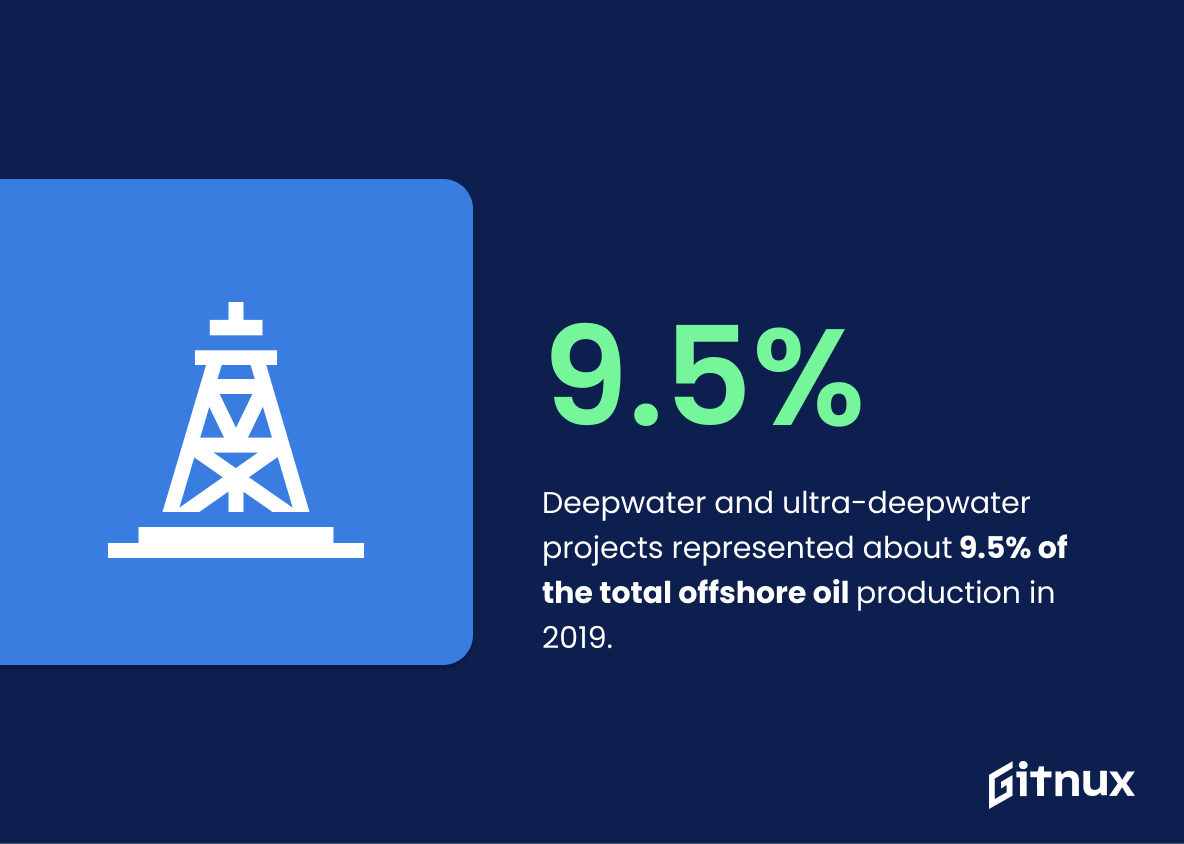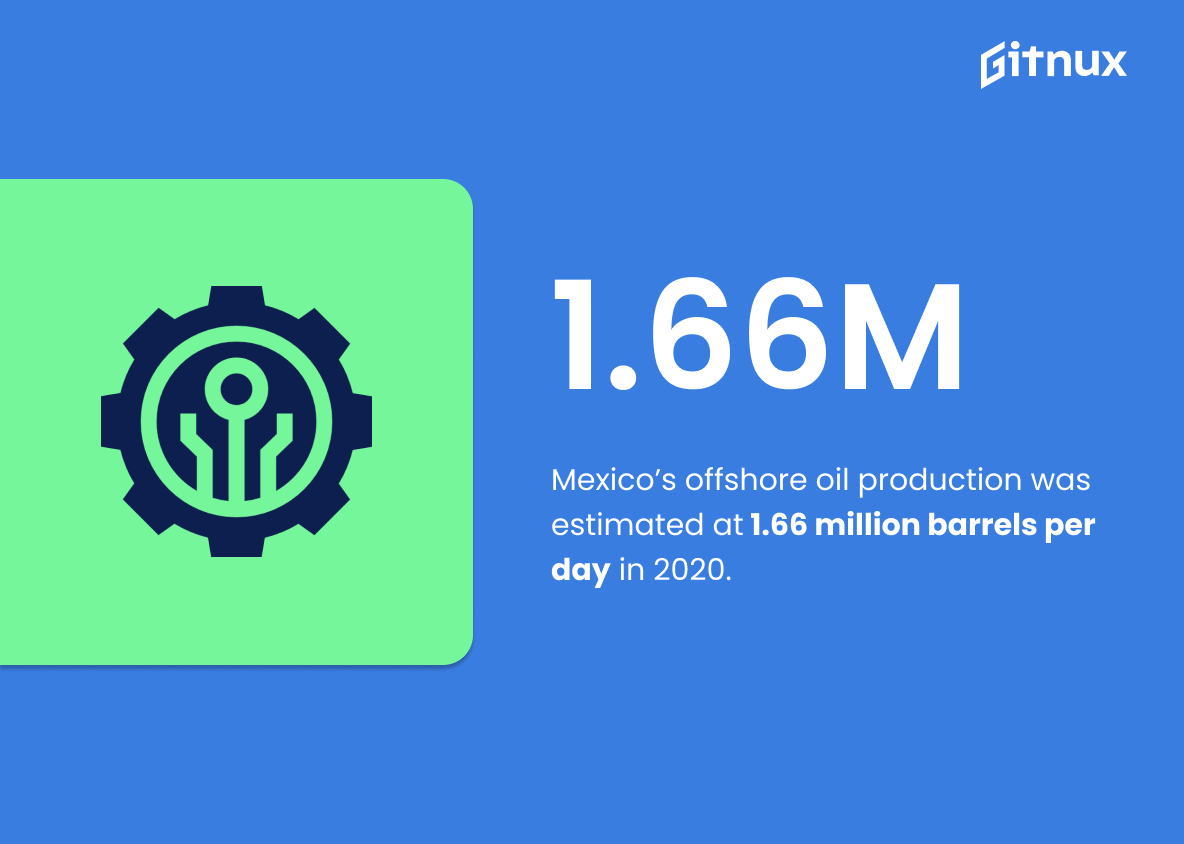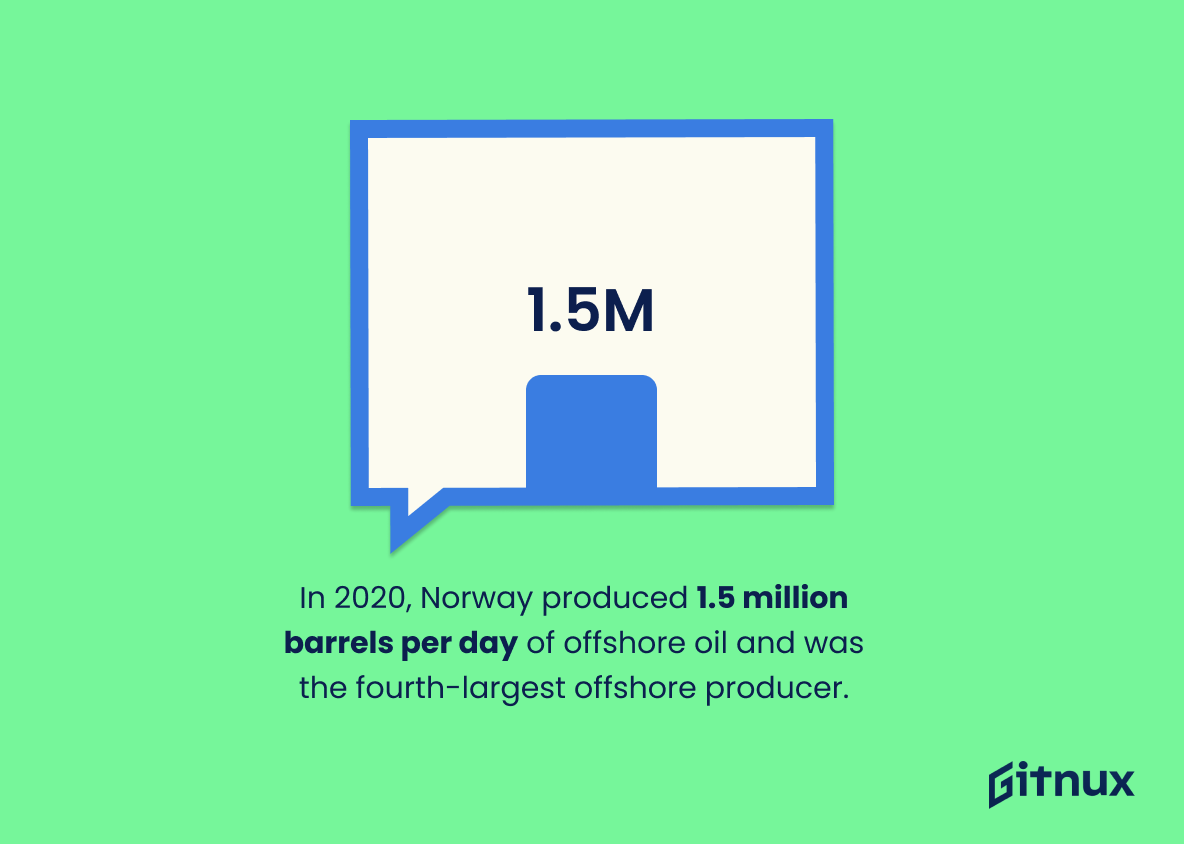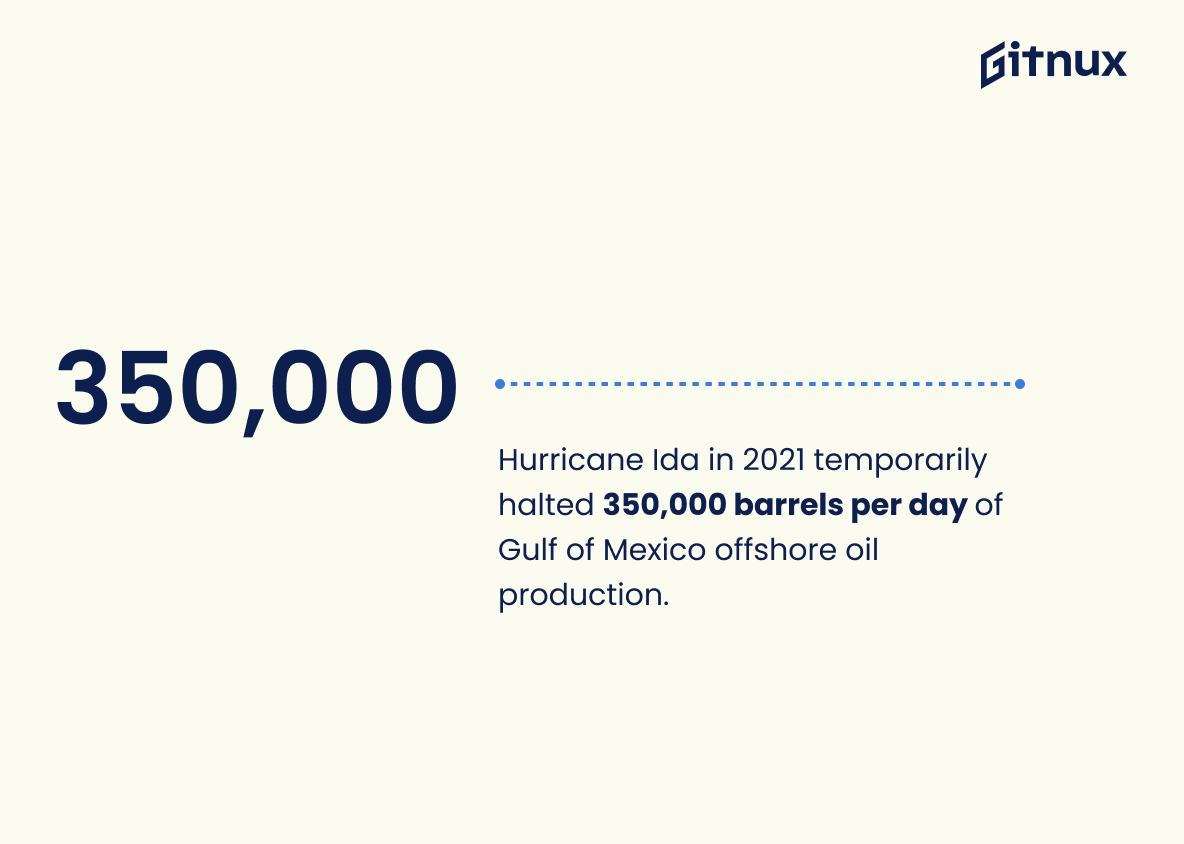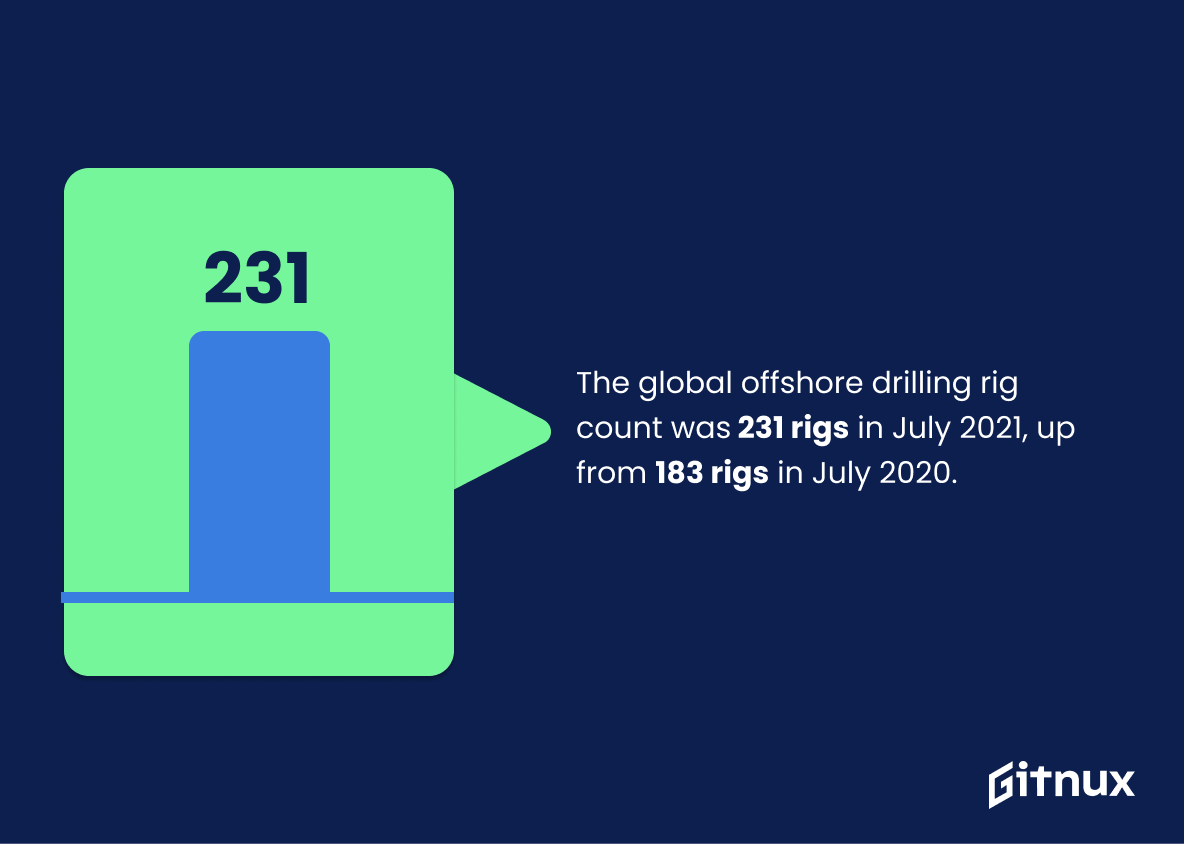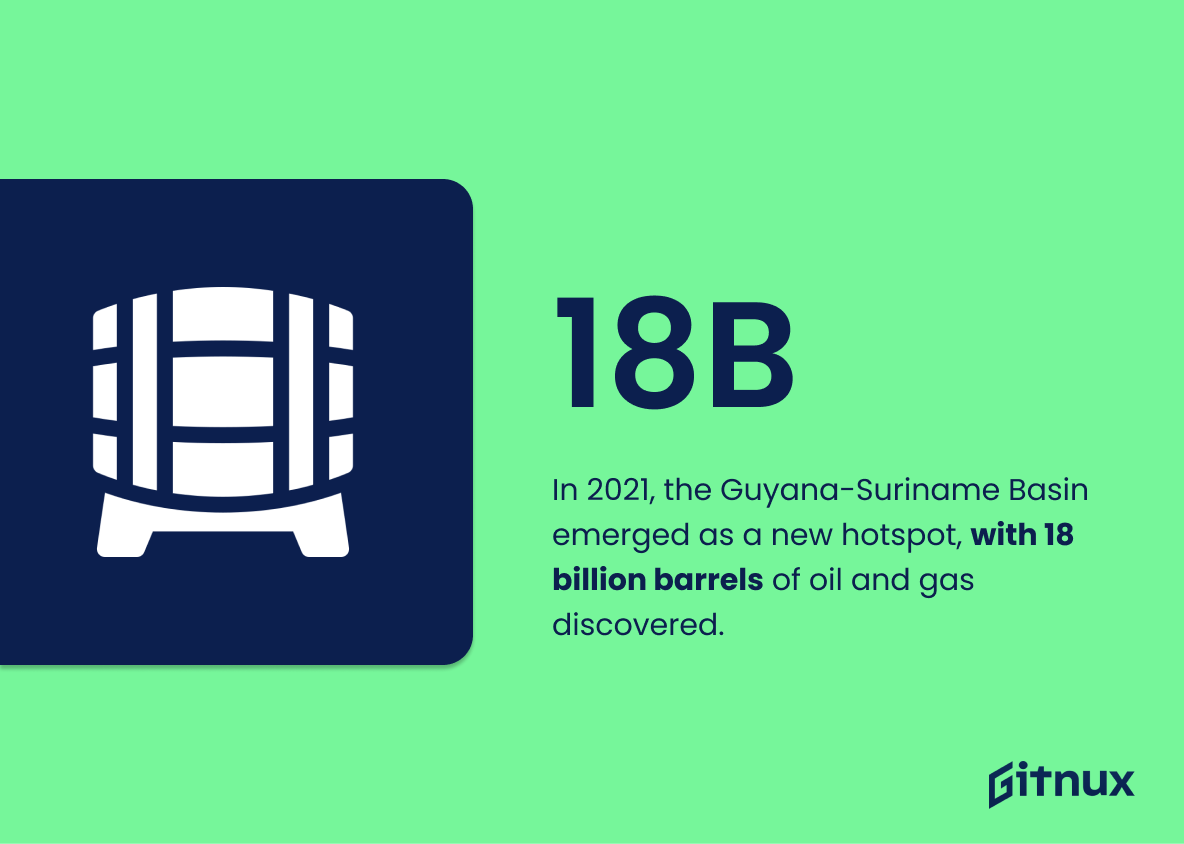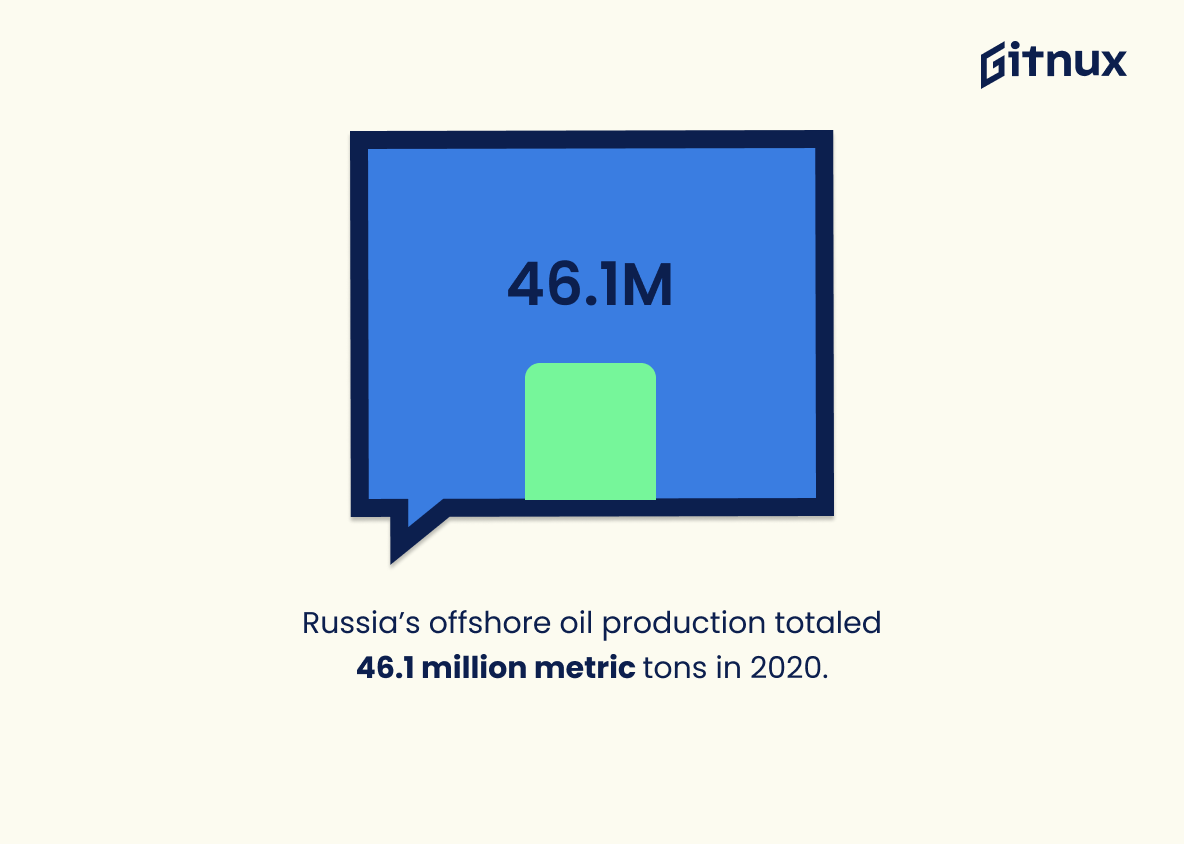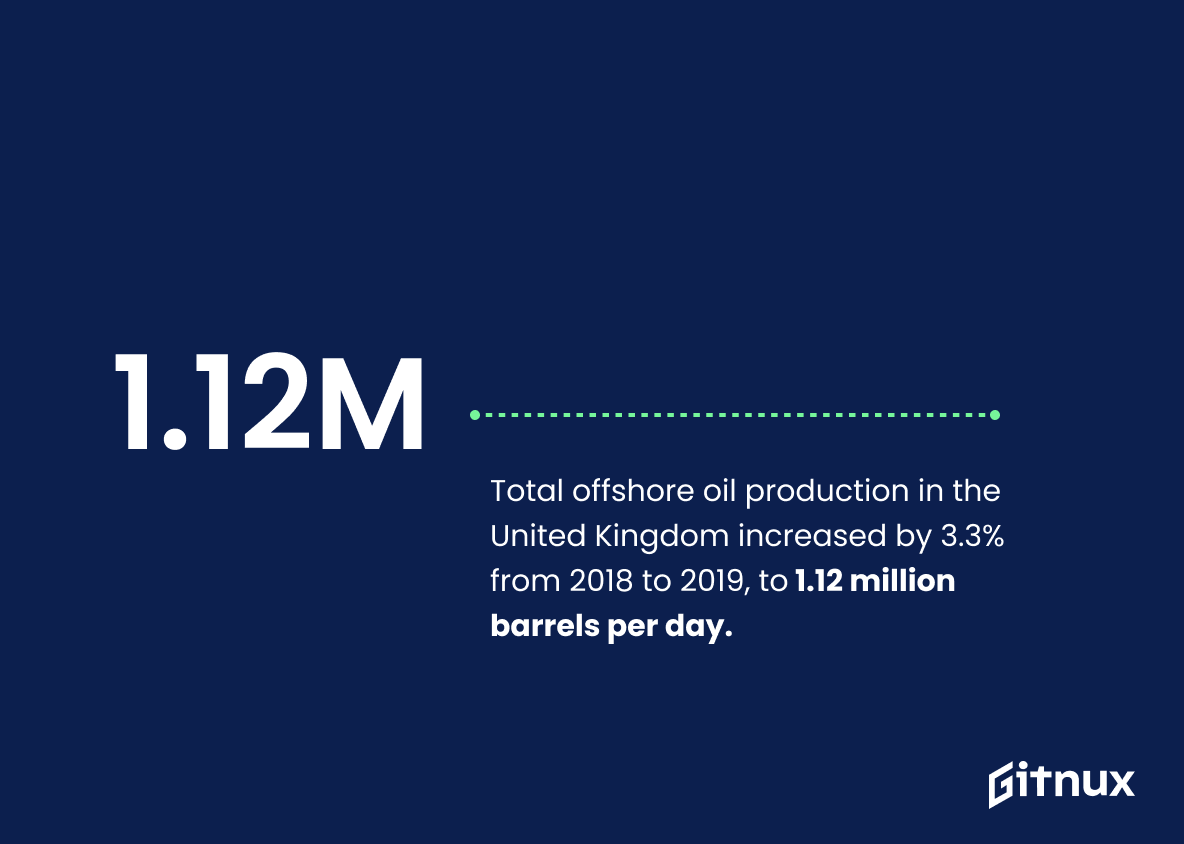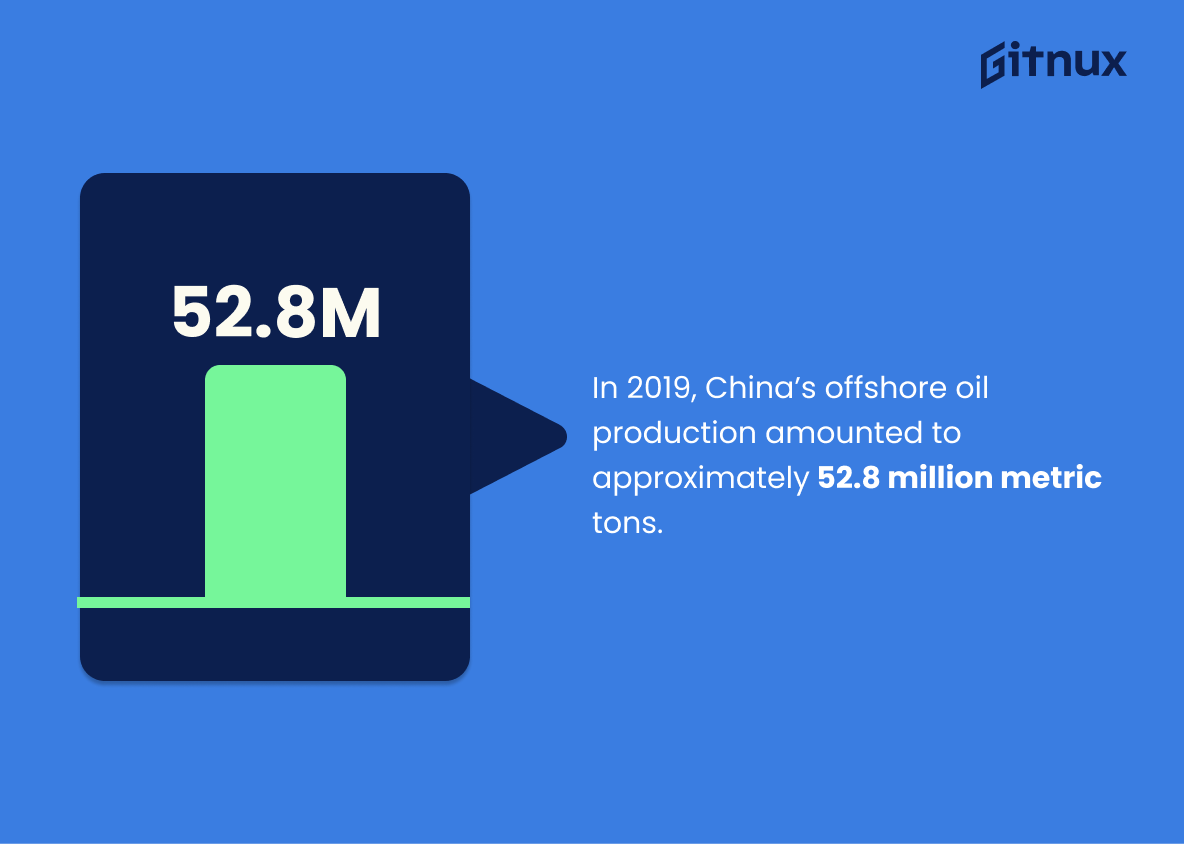Offshore oil production has become an increasingly important part of the global energy landscape. In 2020, offshore oil production accounted for about 30% of total global oil production and was led by Saudi Arabia with over 3.2 million barrels per day produced that year. Deepwater and ultra-deepwater projects represented 9.5% of total offshore output in 2019, while Brazil holds the second-largest reserves at 23.6 billion barrels in 2021. The North Sea is one of the world’s most significant areas for offshore exploration, with 184 platforms and 46,000 employees as recently as 2019; meanwhile, record highs were reached in both Gulf of Mexico (2 million bpd) and United States (2.2 million bpd) productions last year too – not to mention Australia’s 280 thousand bpd or Mexico’s 1.66 mb/d from 2020 figures.
Looking ahead into 2021 we can expect a major rebound in FPSO units deployed worldwide alongside a 13% annual growth rate projected for Africa between now & 2025 – plus new hotspots such as Guyana-Suriname Basin emerging with 18 billion barrels discovered this past year alone. Russia had 46 metric tons produced last year whilst UK saw its own increase by 3%. China & India also contributed significantly to overall numbers: 52 metric tons & 5 respectively during their respective fiscal years ending 2020/21.. All these facts point towards an ever growing importance placed on Offshore Oil Production Statistics which are sure to be closely monitored going forward.
This statistic is a powerful indicator of the importance of offshore oil production in the global energy landscape. It highlights the fact that offshore oil production is a major contributor to the world’s energy supply, and that it is likely to remain so in the foreseeable future. This is an important point to consider when discussing the future of offshore oil production and its potential impacts on the environment.
In 2020, Saudi Arabia was the top offshore crude oil producer, producing over 3.2 million barrels per day,
This statistic is a powerful indicator of the importance of offshore oil production in Saudi Arabia. It highlights the country’s commitment to the industry and its ability to produce a significant amount of oil on a daily basis. This is especially relevant in the context of a blog post about offshore oil production statistics, as it provides a clear example of the potential of offshore oil production and the importance of the industry in the region.
Offshore Oil Production Statistics Overview
Deepwater and ultra-deepwater projects represented about 9.5% of the total offshore oil production in 2019,
This statistic is a telling indication of the importance of deepwater and ultra-deepwater projects in the overall offshore oil production landscape. It highlights the fact that these projects are playing an increasingly significant role in the industry, and that their contribution to the total output is growing. This is an important point to consider when discussing the future of offshore oil production, as it suggests that these projects will continue to be a major factor in the industry.
Brazil holds the second-largest offshore oil reserves in the world, totaling 23.6 billion barrels in 2021,
The fact that Brazil holds the second-largest offshore oil reserves in the world is a testament to the country’s potential for energy production. With 23.6 billion barrels of oil, Brazil is well-positioned to become a major player in the global offshore oil production market. This statistic is a reminder of the importance of offshore oil production and the potential for Brazil to become a major supplier of energy to the world.
The North Sea is one of the world’s most important offshore oil and gas production areas, with 184 platforms and over 46,000 employees in 2019,
This statistic is a testament to the significance of the North Sea in the global offshore oil and gas production industry. It highlights the sheer scale of the operations taking place in the region, with 184 platforms and over 46,000 employees in 2019. This is a clear indication of the importance of the North Sea in the industry, and the impact it has on the global economy.
The average daily oil production in the Gulf of Mexico reached a record-high of 2 million barrels per day in 2020,
This record-breaking statistic is a testament to the success of offshore oil production in the Gulf of Mexico. It highlights the potential of the region to produce vast amounts of oil, and serves as a reminder of the importance of the industry in the region. It also demonstrates the potential for further growth in the future, and the potential for increased economic activity in the region.
The United States is the third-largest offshore producer, producing over 2.2 million barrels per day in 2020,
This statistic is significant in the context of offshore oil production statistics as it highlights the United States’ position as a major player in the industry. It demonstrates the country’s ability to produce a significant amount of oil, which is essential for the global economy. Furthermore, it shows the importance of the US in the offshore oil production market, and how it is a major contributor to the industry.
Mexico’s offshore oil production was estimated at 1.66 million barrels per day in 2020,
The fact that Mexico’s offshore oil production was estimated at 1.66 million barrels per day in 2020 is a significant indicator of the country’s economic health and energy security. This statistic is a testament to the country’s ability to produce and export oil, which is a major source of revenue for the Mexican government. Additionally, this statistic is important in understanding the global offshore oil production landscape, as Mexico is one of the world’s leading producers of offshore oil. This data can be used to inform decisions about investments in offshore oil production and to better understand the global energy market.
In 2020, Norway produced 1.5 million barrels per day of offshore oil and was the fourth-largest offshore producer,
This statistic is significant in the context of offshore oil production statistics because it highlights Norway’s impressive production capabilities. It demonstrates that Norway is a major player in the offshore oil industry, ranking fourth in the world in terms of production. This information is important for understanding the global offshore oil market and the role that Norway plays in it.
Around 350,000 barrels per day of offshore oil production was temporarily shut down in the Gulf of Mexico due to Hurricane Ida in 2021,
This statistic is a stark reminder of the potential disruption that natural disasters can have on offshore oil production. It highlights the fragility of the industry and the need for companies to be prepared for such events. It also serves as a warning to other companies in the industry to ensure they have adequate safety measures in place to protect their operations from the effects of extreme weather.
The global offshore drilling rig count was 231 rigs in July 2021, up from 183 rigs in July 2020,
This statistic is a clear indication that offshore oil production is on the rise. The increase in the number of rigs from 183 to 231 in the span of a year is a testament to the growing demand for offshore oil production. This is an important statistic to consider when discussing offshore oil production statistics, as it shows that the industry is continuing to expand and develop.
Africa is projected to have the highest offshore production growth rate between 2020 and 2025, with an annual rate of 13%,
This statistic is a testament to the potential of Africa’s offshore oil production. It highlights the continent’s capacity to become a major player in the global oil production market, with an impressive annual growth rate of 13%. This could be a major boon for African economies, providing much-needed jobs and revenue. It could also help to reduce the continent’s dependence on foreign oil, allowing it to become more self-sufficient. In short, this statistic is a sign of Africa’s potential to become a major player in the offshore oil production industry.
In 2021, the Guyana-Suriname Basin emerged as a new hotspot, with 18 billion barrels of oil and gas discovered,
The discovery of 18 billion barrels of oil and gas in the Guyana-Suriname Basin in 2021 is a game-changer for offshore oil production statistics. This massive find has the potential to revolutionize the industry, providing a much-needed boost to global energy production and economic growth. It also serves as a reminder of the importance of exploring new sources of energy, as the world continues to grapple with the effects of climate change. This new hotspot is sure to be a major player in the offshore oil production landscape for years to come.
Russia’s offshore oil production totaled 46.1 million metric tons in 2020,
This statistic is a telling indication of the state of offshore oil production in Russia. It provides a snapshot of the country’s production capabilities and reveals the potential for further growth in the sector. By understanding the current output of Russia’s offshore oil production, we can gain insight into the potential for future development and investment opportunities.
Total offshore oil production in the United Kingdom increased by 3.3% from 2018 to 2019, to 1.12 million barrels per day,
This statistic is a testament to the success of the United Kingdom’s offshore oil production industry, showing that it has grown significantly over the past year. This growth is indicative of the industry’s resilience and ability to adapt to changing market conditions, and is a positive sign for the future of the industry. It is also a reminder of the importance of offshore oil production to the UK economy, and the need to ensure that it remains a viable and profitable sector.
In 2019, China’s offshore oil production amounted to approximately 52.8 million metric tons,
This statistic is a powerful indicator of the importance of offshore oil production in China. It shows that the country is heavily reliant on this resource for its energy needs, and that it is making significant investments in this sector. This is especially relevant in the context of a blog post about offshore oil production statistics, as it provides a valuable insight into the scale of the industry in China and its importance to the country’s economy.
India produced around 5.5 million metric tons of crude oil from offshore sources in the fiscal year 2020,
The fact that India produced 5.5 million metric tons of crude oil from offshore sources in the fiscal year 2020 is a testament to the country’s commitment to energy security. This impressive figure highlights the importance of offshore oil production in India’s energy mix and the potential for further growth in the sector. It also serves as a reminder of the need for continued investment in offshore oil production infrastructure to ensure that India can meet its energy needs in the future.
Conclusion
Offshore oil production is a major contributor to the global energy supply, accounting for around 30% of total global oil production in 2020. Saudi Arabia was the top offshore crude oil producer that year, producing over 3.2 million barrels per day. Deepwater and ultra-deepwater projects represented about 9.5% of total offshore oil production in 2019 while Brazil holds the second-largest offshore reserves totaling 23.6 billion barrels in 2021. The North Sea is one of the world’s most important areas for offshore exploration with 184 platforms and 46,000 employees as well as record high daily average productions from both Gulf of Mexico (2 million bpd) and United States (2.2 million bpd).
Other notable producers include Australia (280 thousand bpd), Mexico (1.66 mb/d), Norway (1 .5 mb/d) and Russia (~46 mmt). In addition to these countries’ contributions to current output levels, future growth will be driven by new FPSO units deployed worldwide along with an increase in drilling rigs activity especially across Africa where annual rate could reach 13%. Finally Guyana-Suriname Basin has emerged recently as a promising hotspot after 18 billion barrels were discovered there this year alone
References
0. – https://www.www.eia.gov
1. – https://www.www.ogauthority.co.uk
2. – https://www.www.nsenergybusiness.com
3. – https://www.www.statista.com
4. – https://www.www.woodmac.com
5. – https://www.www.offshore-technology.com
6. – https://www.ainscoughassociates.co.uk
7. – https://www.www.rystadenergy.com
